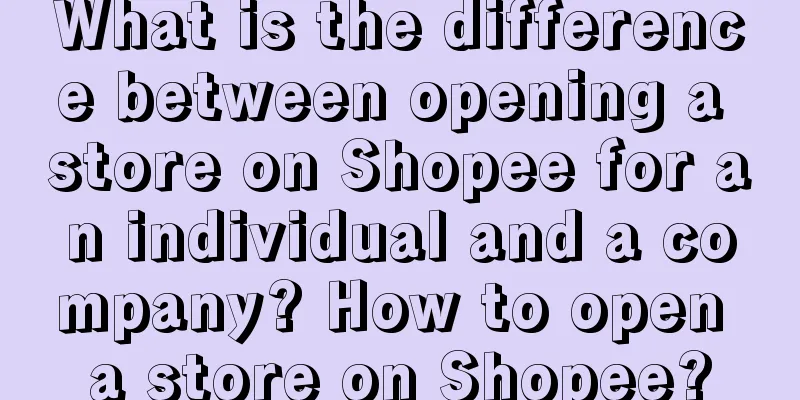Armani, Dyson and MANNER are all doing exhibition marketing. What is the logic behind it?

In recent years, “holding exhibitions” is becoming a new trend in the brand industry. From exclusive art exhibitions of luxury brands such as Armani and Bulgari to various theme exhibitions of beauty and catering brands, holding exhibitions has quietly become the "traffic password" for brands to attract users. Correspondingly, "visiting exhibitions" is becoming a new fashion standard for young people today. So far, on the Xiaohongshu platform, the topic of "visiting exhibitions" has accumulated more than 2.37 million notes. How did exhibitions become popular? Why do brands start to hold exhibitions in large numbers? Through some cases, we will analyze the marketing logic behind brand exhibitions. 1. From luxury goods to new consumption1. “Exhibition fever” sweeps the brand industryIn the past few years, luxury brands such as Armani, Chanel and Dior have frequently held their own art exhibitions in China, sparking a wave of luxury exhibitions. For example, an art exhibition held by Bulgari in April this year not only brilliantly interpreted the image of the brand's product series, but also perfectly expressed the brand story and style to consumers, reflecting Bulgari's creative inspiration and unique aesthetics. Influenced by many luxury brands, more and more new consumer brands have also chosen to join the ranks of holding exhibitions in recent years. MANNER Coffee once teamed up with UCCA Center for Contemporary Art to launch a limited exhibition inspired by Warhol's iconic element "banana" during the "Becoming Andy Warhol" exhibition in Shanghai. During the event, users can not only appreciate Warhol's artworks in the venue, but also taste the "Banana Trio" specialty drink. Consumers who participated in the event checked in and took photos, bringing huge exposure and popularity to the brand. In addition to MANNER, there are also Nayuki's cup art gallery and HARMAY's creator carnival as high-quality exhibitions, bringing consumers more dimensional experiences. But for brands, the purpose of spending money and effort on exhibitions is often not to make money. Why are so many brands still flocking to it? 2. Why do brands love to hold exhibitions?The domestic exhibition industry will see an explosion in 2023. According to statistics, the number of exhibition halls in China will exceed 1,050 in 2023, doubling that of 2020. More and more brands are joining the ranks of holding exhibitions, becoming "unfocused". So, what is the significance and value of holding exhibitions for brands? We can summarize and discover through several cases. 1. Tell your brand storyThe most common way of brand curation is to tell brand stories through exhibitions and strengthen user cognition, which is very common in the luxury goods industry. In April this year, the Cartier Cheetah theme exhibition was officially unveiled at the Guangzhou Postal Museum. As the brand's iconic animal image, the cheetah appeared in Cartier's animal world as early as 1914. Later, this mysterious animal, under the guidance of designer Jeanne Toussaint, became one of Cartier's classic designs. In this exhibition, Cartier reviewed the changes in the cheetah style over the past 100 years since the brand was founded, and used high-tech equipment to create an immersive experience, allowing visitors to feel the brand's history and style during the visit. 2. Strengthen emotional connectionOf course, another great use of exhibitions is to strengthen the connection between brands and users. Compared with invisible and intangible TV ads, offline exhibitions are more intuitive and more effective. On the occasion of the 40th anniversary of Chicken McNuggets, McDonald's held an exhibition for this flagship product. McDonald's set up a number of unique game sessions such as "Play Gachapon to Win Prizes", "Take Photos with Giant Chicken McNuggets", and "Read the Chicken McNuggets Storybook", which greatly increased the sense of participation of users. Take the "Giant Chicken McNuggets" as an example. It is said that the inspiration for this idea came from a Xiaohongshu blogger. As a McNuggets believer, he wanted to build a McNuggets nest for his dog. Unexpectedly, he received an official invitation to participate in the production of offline interactive installations for this McNuggets event. This shows that McDonald's cares a lot about the emotional connection between the brand and its users. Curation provides a window for fans to have face-to-face conversations with the brand. 3. Highlight product selling pointsFor brands, since increasing sales is the ultimate goal of marketing, then perhaps it is also possible to be "simple and crude". Through curation, the selling points of products can be directly highlighted to stimulate consumers' shopping desire. For example, in 2019, the detergent brand Dettol created a subway art exhibition called “The Truth About Clothes”, which used art to display the bacteria on clothes, which was eye-opening! The exhibits of this exhibition are three pieces of clothing made with special craftsmanship. Dettol uses clothes as paper and bacteria as words to create an art work to remind people that seemingly clean clothes actually hide many "invisible" bacteria. In this "mind-opening" art exhibition, Dettol promoted its flagship product, Dettol clothing disinfectant, by conveying to the public the idea that laundry and stain removal does not mean sterilization. 4. Deliver brand conceptAlthough curation is mostly for marketing, sometimes brand curation can also be done without revealing its own products, with the sole purpose of conveying ideas. For example, on the occasion of the New Year of 2022, the domestic brand PROYA appeared in the Shenzhen Metro and held a "turnaround" poetry exhibition. This poetry exhibition invited 27 poets from different fields, including Yu Xiuhua, Chen Nianxi, and Xie Chunhua, to write the first poem of the New Year with the theme of "hope". At the same time, PROYA also set up interesting interactive devices on site to increase the sense of participation of passers-by. The stories and poems of these poets once again prove that hope and poetry are open to everyone, regardless of age or circumstances. This is exactly the brand attitude that PROYA wants to convey. 3. How can a brand create a “high-quality” exhibition?Most of today’s brand exhibitions are also “Internet celebrity exhibitions”, where check-ins from celebrities and KOLs attract consumers to visit. However, if the exhibition itself does not go beyond the creative thinking and characteristics of the products, the brand exhibition is likely to become an upgraded version of a pop-up store and ultimately receive a mediocre response. How should a brand create a high-quality exhibition in a creative way? Below, I will provide some feasible suggestions for brands from three dimensions. 1. Have a clear theme and story, giving users a reason to participateSince it is brand curation, its purpose is obviously to promote products or expand brand influence through the exhibition. Therefore, the exhibition needs to have a distinct theme and carry out a series of designs around this theme. Only in this way can we remove impurities, convey the brand’s intention more accurately, and form a more focused and in-depth dialogue with consumers. Taking FOTILE's "Stories of Hands" exhibition as an example, FOTILE dishwasher took "liberating hands" as the entry point and held a brand film festival to record the stories that come from the hands. The exhibition collected the shining moments of the hands of world champion Deng Yaping, well-known ophthalmologist Tao Yong and many FOTILE dishwasher users. Through three chapters of "Hand-made Legends", "Holding Craftsmanship" and "Holding Life", the brand's redefinition and thinking of dishwashers are displayed. 2. Visually prominent, easy to produce, giving users a reason to spread the wordThe appearance of an exhibition is the first impression that visitors get when they visit, so the brand should be "eye-catching" in appearance. Specifically, you can use bright colors, unique shapes or attractive patterns to attract the attention of the audience. Rich visual effects can not only increase the probability of audience staying, but also stimulate their desire to "take photos and check in". Nowadays, social media seeding has become an important source of brand traffic, so "easy to produce photos" is one of the important principles of current brand curation. Take the "Floating in Time and Space" Armani Haute Couture Private Fragrance World Premiere as an example. Armani created a dazzling and charming light and shadow drama from the three dimensions of sight, hearing and taste. Not only can visitors see the brand’s latest haute couture fashions at the exhibition, but they can also smell four private fragrances, making them feel as if they were back at the Giorgio Armani haute couture fashion show. 3. Experience is king, strong sense of participation, giving users a reason to consumeIn addition to visual impact and theme communication, another key point of brand curation is the design of the experience. In the era of "experience is king", consumers are no longer satisfied with being a quiet "listener". Instead, they hope to participate more in dialogue and communication with brands. Therefore, brands need to design some check-in points and small games in the curation process to enhance users' sense of participation. By touching, operating and interacting with the products, consumers can also more intuitively understand the functions and culture of the products, and deepen their identification with the brand through immersive experience. Taking Dyson's "New Discovery" experience exhibition as an example, the exhibition site uses vivid technology displays, close styling experiences and personalized creative photo services to not only allow consumers to intuitively feel the technology of Dyson products, but also provide new hair care styling experience opportunities. IV. ConclusionFashion godmother Coco Chanel once said: "Fashion is fleeting, style is eternal." In the face of fleeting fashion, brands can use exhibitions to preserve their own style in the minds of the public and form memories and associations, but they must not regard exhibitions as a "panacea." For a brand, while displaying its style, it also focuses on creating its brand connotation, so that the brand can stand out in the fierce market competition and become a truly valuable existence in people's hearts. Author: Yan Tao Sanshou |
<<: Douyin takeaway, the sound gradually fades
>>: Advertising company cannot transfer consultation
Recommend
Shopify's US-based logistics network service provider Deliverr goes online
Deliverr, a local logistics network service provid...
Why does marketing to women always fail?
The discussion about feminism has become increasin...
One article to understand how 7 types of Xiaohongshu merchants operate? Avoid blindly touching the elephant
Xiaohongshu has more and more merchants now, so ho...
What products are good for cross-border e-commerce? Any good recommendations?
After e-commerce became popular, WeChat business a...
What are the 9 international express delivery companies?
Domestic express delivery companies usually send p...
How to claim Amazon's European shipping subsidy? What is the method?
Amazon has many sites, including the Amazon Europe...
6 popular article templates on Xiaohongshu|Just follow them [Industry templates V2.0]
The author of this article has summarized the six ...
Notice of Adjustment of Shopee’s Free Collection Time
In order to help Shopee sellers improve the delive...
What are the off-site promotion methods for Amazon?
Amazon promotion can be divided into two ways: on-...
A 10,000-word analysis of MINISO’s overseas expansion: localization challenges, brand premium and e-commerce crisis
What? Is this the MINISO we are familiar with? Let...
Can Wish deliver goods locally? How does Wish deliver goods?
Some of the merchants who have opened stores on th...
After meeting 30+ front-line traders, I summarized 20 new views on private domain
"Private domain" is one of the hottest t...
How to cancel automatic renewal on Shopify? How to cancel the package?
Shopify is an independent website. To open a store...
Why can't I register on eBay?
If we don't plan to open a store on eBay to se...
What is eBay direct warehouse? What are eBay's logistics methods?
For eBay merchants, after opening a store, they ne...









